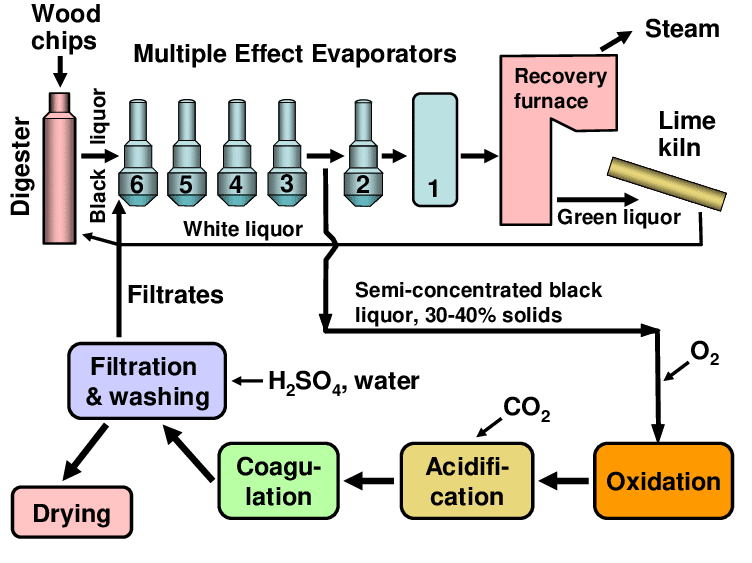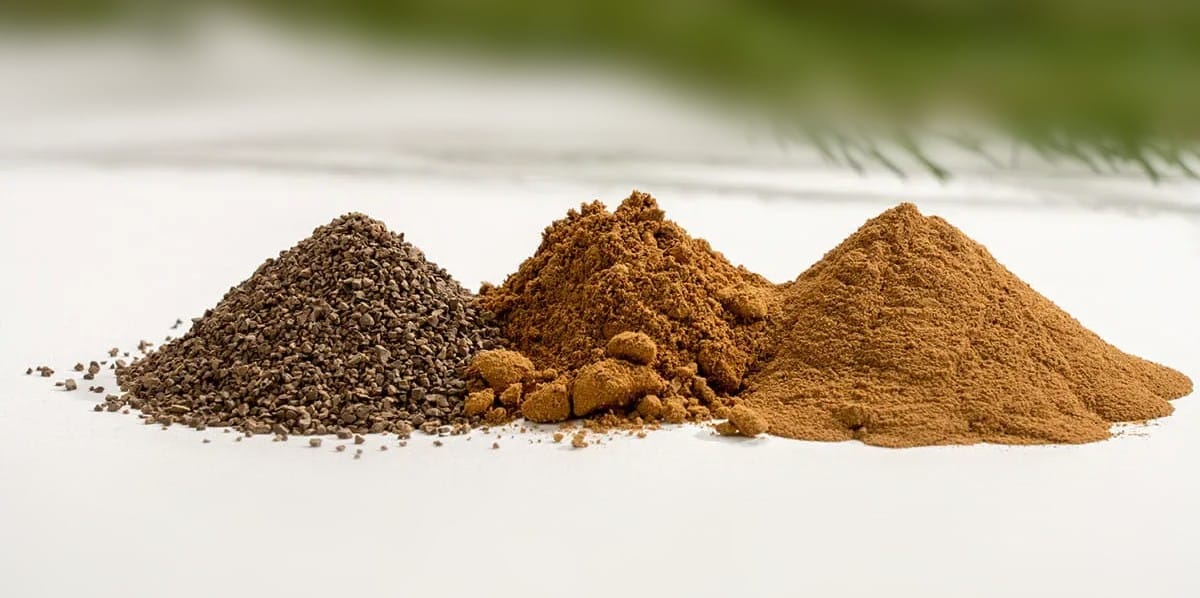2022 has seen significant progress in the fight against climate change with the greening of the global economy intensifying and expanding, along with the search for renewable and sustainable materials like lignin.
The growing concerns of environmental pollution and the need to do away with fossil fuel resources have prompted more research on bio-based raw materials. And among the various options available, lignin stands out for some reasons, four reasons actually.
Lignin-based biomaterial is of high carbon content, low-cost, highly renewable, and sustainable. So, what is lignin exactly? What are its industrial applications or uses and what are the processes to make it?
Understanding and knowing its role in the world’s transition to a low-carbon economy is important. More so if you are running a business and are looking for a potential raw material that emits low carbon. Or perhaps you’re brainstorming a project that requires the use of lignin.
Either way, we’ll help you know better about this planet-saving material and why it will be the flagship for the low-carbon transition.
What is Lignin?
Deep within the cell walls of every tree lies a powerful substance called lignin.
Lignin is the second most abundant organic polymer on Earth and it’s also the largest natural source of aromatic monomers. It is what makes the plant’s structure firm and resistant to rotting.
- This biomaterial makes up approximately 30% of the total composition of a wood. It also has a high carbon content of up to 60% and is present in all vascular plants.
Kraft lignin was discovered back in the 1940s but it has never been a hotter topic in the biomaterial industry than today. As governments and companies around the world focus their investments in reducing carbon emissions and supporting low-carbon economies, efficient production and use of lignin grab their attention.
Industry estimates forecast that the global lignin market will reach $1 billion by 2025.
Primarily, lignin has been produced as a by-product in pulp and paper factories like the case of the Kraft process. Of the millions of tons of lignin made each year, most of it is used as a low-cost fuel for generating power and heat.
And as the demand for renewable materials continues to increase, new commercial applications and technological improvements for lignin are underway.
- In particular, wood pulping and other biorefinery industries extract about 50 – 70 million tonnes of lignin each year; still, only about 2% is used for industrial applications, which is pretty small.
But with the growing interests and funding pumped into biorefinery and extraction innovations, lignin application will only multiply. In fact, this biomaterial is now useful in a variety of industrial applications.
What are the Industrial Applications of Lignin?
Lignin, which basically has the same chemical components as their petroleum-based counterparts and is renewable, has various practical uses. That is because of the various advantages it provides, primarily that it reduces the carbon footprint of a product.
The biomaterial can even make a product better in some applications.
In general, here are the major applications for bio-based lignin:
- Adhesives
- Foam insulation
- Dispersant (textile, pesticide, concrete admixture, and drywall industries)
- Replacement of fossil-based polymers in making plastics
- Asphalt binder
- Bio-based carbon fiber
Now let’s consider some key examples of lignin applications by companies that have commercialized the use of this material.
Bio-based furniture board and plywood
Reducing the carbon footprint of plywood products is possible without compromising their technical performance.
For instance, Latvijas Finieris, a global producer of birch plywood that’s using the bio-based lignin as binder in making plywood was able to cut emissions by up to 49%. It uses lignin Lineo® by Stora Enso as plywood resins instead of phenol.
Another product manufacturer, Koskinen, started using lignin-based glue in producing furniture boards, calling its product Zero Furniture Board. The company is also using Stora Enso’s lignin-based binder NeoLigno®.
Bioplastics
Lignin is also very beneficial in making plastics, turning these not-so-eco-friendly materials into a more biodegradable product.
One company, Lignin Industries, converts lignin into a biodegradable polymer that can replace fossil-based plastics. They call it RENOL, which can be used as raw material together with the existing thermoplastics.
In particular, it is the top biomaterial option in three applications for bioplastics – films, infill, and injection-molded products.
- The huge benefit of using a lignin-based polymer is that each kilogram (kg) of fossil-based plastic replaced saves 5 to 6 kg of carbon emissions.
So, if the world is producing over 380 million tons of plastic every year, applying lignin as the base polymer results in a whopping 1.9 to 2.3 billion tons of CO2 prevented from getting released. Or it can only be half of that figure, which is still an impressive progress for the plastic industry.
Bio-asphalt
With over 1 trillion metric tonnes of asphalt produced each year, greening this industry is a huge task. Asphalt is usually a mixture of 95% aggregates and 5% binder, which is bitumen.
Bitumen, which does occur naturally, is a very thick liquid form of crude oil. Used as a binder in asphalt, it’s a by-product of oil refining.
Replacing it with lignin-based bio-bitumen reduces the planet-warming emissions of asphalt. Lignin has been studied, tested, and showed positive results in this industrial application.
Stora Enso’s Lineo™ has been successfully used in several asphalt projects in Europe, including bike lanes and heavy load transportation roads. In these applications, the lignin-based binder replaces half of the bitumen.
Apart from the above uses of Lignin, the chemical industries also offer many possible uses for lignin. These include adhesives, coating, emulsifier, and polyols.
In addition, Stora Enso built a facility for €10 million to create bio-based carbon by turning lignin in trees into batteries.
As the global lignin culture is in the making, it will lead to making safer, carbon-neutral and cost-effective products that we use daily. So, what makes this biomaterial important and beneficial.
What are the Key Benefits of Lignin?
Most of the benefits of using lignin are mentioned in the applications above. In gist, here are the key advantages of using this biomaterial instead of its fossil-based counterpart:
- Renewable material of natural origin
- It doesn’t need any additional tree-cutting and it doesn’t generate waste as it is from the kraft pulp process
- Can replace fossil-based materials across a wide range of applications, reducing significant emissions
- Traceable origin, usually from sustainably managed forests
These benefits make lignin a desirable raw material for countless applications. And recent developments qualify lignin as a carbon additive in making batteries out of wood.
This and other uses as a carbon fiber material is due to the growing demand for eco-friendly and renewable energy storage.
So, how is lignin-based biomaterial produced? Same as its uses, the processes of producing lignin also vary, depending on the end-use application.
What are the Main Processes to Produce Lignin?
In Canada, the leaders in lignin recovery have led scientific research that resulted in the patenting of both lignin-recovery methods in use in this country — LignoForce System™ and the up-and-coming TMP-Bio™.
The LignoForce Method:
FPInnovations and NORAM Engineering together developed the LignoForce method, a patented technology for recovering high-purity lignin from softwood, hardwood or eucalyptus kraft black liquors (BL).
This process uses an oxidation step to extract and convert harmful compounds present in kraft BL to non-volatile compounds.
LignoForce was implemented in 2016 in the West Fraser’s Hinton pulp mill, Canada’s first commercial-scale lignin recovery plant. This process is often ideal at kraft pulp mills to produce:
- more pulp in mills that are recovery-boiler limited
- high-quality lignin (acid form) for use as a carbon-neutral fuel in the lime kiln
- high-quality lignin for use in industrial applications such as wood adhesives, dispersants, and as a bitumen substitute in asphalt.
The following diagram shows how the LignoForce process works as discussed in Hubbe et al. (2019) study.

In this process, the black liquor is oxidized with oxygen before being acidified with carbon dioxide, which has several advantages including:
- Reduced sulfur odor
- Reduction of CO2 use by 20 to 40 per cent
- Heat from the oxidation step gets recovered and reused at the mill
- The lignin is purer (less than 0.5 per cent ash content compared to 3 per cent ash)
The LignoBoost Process:
LignoBoost is a patented extraction process that was initially developed by universities but commercialized and further improved by Valmet. This process involves two major steps – (1) separation and (2) washing.

By separating the process into two steps, a high-quality lignin is produced. The method also offers great options to adjust the characteristics of the final lignin material.
Step 1: Separation
The first step is to separate the material from the mill’s black liquor. BL is from the evaporation process, and the pH gets lower with carbon dioxide and gas from the second step of the process.
Once the pH drops, lignin precipitates, gets separated from the liquor, and produces the LignoBoost crude lignin.
Step 2: Washing
This is where the lignin gets purified. A low pH solution is used to wash the crude material and then it’s dewatered in another filter press. The conditions during this washing step significantly impact material’s purity and LignoBoost ensures it is very pure.
Lignosulfonates vs kraft lignin:
Lignosulfonates are sulfonated lignins produced via the sulfite pulping process of the paper and pulp mills. This source has been the most abundant type of lignin that’s available on a commercial scale.
The process involves the use of sulfurous acid as the pulping solution to extract raw liquor to cook the biomass. The extracted lignin becomes water soluble and gets separated from its lignocellulosic biomass. It is this sulphonation process that is critical in giving lignosulfonates its key qualities.
Lignosulfonates were the first dispersants added as water-reducing admixtures to concrete.
- In fact, they account for about 90% of the total market of commercial lignin, with global annual production of 1.8 million tons.
But most pulp mills are employing kraft technology for their production. Thus, kraft lignin becomes more readily available for many value-added applications.
In this sense, the sulfonation of kraft lignin has also become more common practice.
Kraft lignin is separated from wood using sodium hydroxide (NaOH) and sodium sulfide (Na2S). The kraft pulping process involves digesting wood chips at high temperatures and pressure in “white liquor” – a water solution of NaOH and Na2S.
The white liquor dissolves the lignin that binds the cellulose fibers together.
Lignin’s Role in Sustainable, Low-carbon Economy
The growing concerns of environmental pollution and shortage of fossil fuel resources have prompted substantial research on bio-based materials. And lignin becomes one of the top choices.
Its industrial uses have attracted immense attention because of its advantages of high carbon content, low cost, renewability, and sustainability. The bio-based material becomes the environmentalists and climate activists best option for making low-carbon polymers, chemicals, and other materials.
Lignin can replace or augment its petroleum-based counterparts. And with the current trend for sustainable industries, both from the public and private sectors, lignin has the potential to be a building block of a low-carbon economy.


